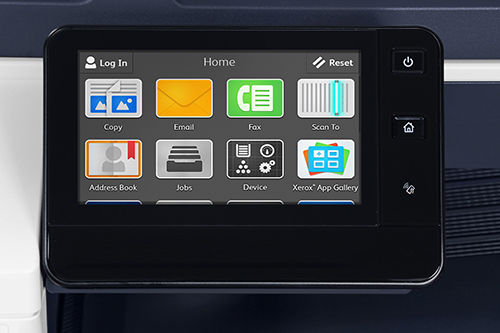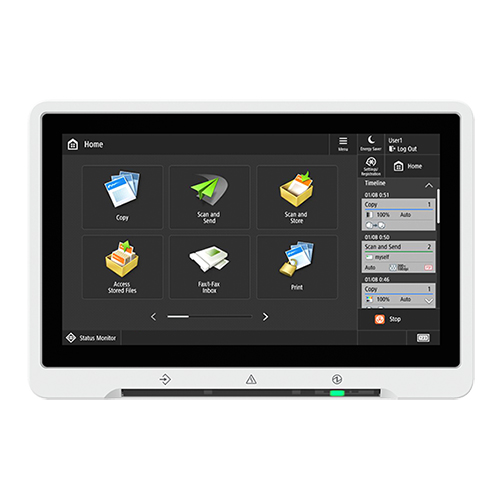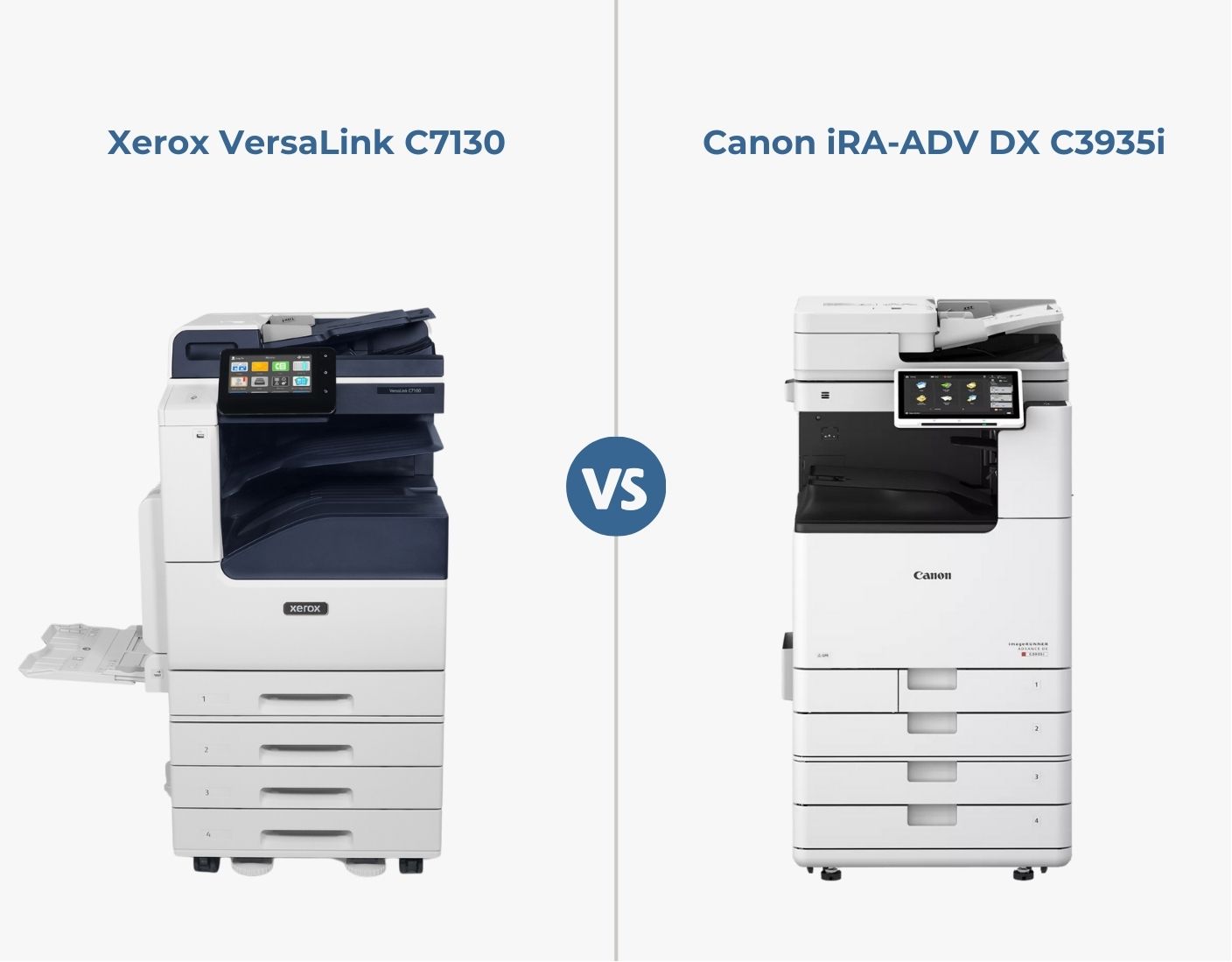Many brands make up the printer industry, but Xerox and Canon are two of the most recognizable ones by consumers.
So, what are the differences between the two? What are the similarities? Who offers the better price?
Over the nearly 40 years we've been in the industry, we have learned that consumers in search of a printer or copier are well aware of various printer brands. However, they often need help distinguishing what sets one brand apart from another beyond its appearance and logo.
As a print vendor partnered with Xerox, it is our duty to be knowledgeable about the brand of products we sell and the products they compete with.
While we can point out where Xerox or Canon may have an advantage, you decide on whom to purchase from.
Our role is to provide you with a fair and honest comparison of two major manufacturers in the industry, allowing you to make an informed decision. If you're seeking information from a reliable source, you've come to the right place.
Let’s compare the two brands, starting with a brief overview of each company before exploring the main similarities and differences between them.
Need a printer/copier? Download your free copy of the Complete Guide to Purchasing or Leasing a Printer for Your Business to make sure you get the right machine in place the first time.
Overview of Xerox
Xerox was founded in 1906 in Rochester, New York, and is credited with being the first printing company to manufacture and sell xerographic plain-paper copiers.
Today, Xerox has over 13,000 active patents for innovation, and its products, which include print solutions for several workplaces, have reached 160 countries worldwide.
Headquartered in Norwalk, Connecticut, Xerox concentrates on selling office equipment such as single-function (print only), multifunction (print, copy, scan, and fax), and production printers for a wide array of workgroups.
Overview of Canon
Canon’s origins date back to the 1930s in Japan, but the company became fully entrenched in the United States with the establishment of its New York branch in 1955.
They sell many kinds of technology but specialize in cameras and office equipment. On the printing side, Canon has an abundance of solutions for office, personal, large-format, and production printing while also providing professional and cloud-based print services.
Canon is currently headquartered in Long Island, New York, and is led by Chairman and CEO Fujio Mitarai.
3 Similarities Between Xerox and Canon
Xerox and Canon offer similar products. To narrow it down, let’s consider the top three similarities between the two manufacturers:
1. Broad Range of Office Printing Solutions
Both Xerox and Canon offer a wide range of single-function and multifunction printers for small, medium, and large workgroups.
The options for small workgroups include machines best suited for workgroups of up to 10 daily users and capable of printing 800-12,000 pages per month.
Examples of single-function devices from both brands for small workgroups include the Xerox VersaLink B415 and Canon imageClass LBP246dw printers, which print at speeds between 40 and 49 pages per minute (ppm).
Read our review of the Xerox VersaLink B415 here.
Medium workgroup options include printers that can meet the needs of workgroups with up to 20 daily users that print at a volume somewhere in the 1,500-15,000 pages per month range.
Examples include the Xerox VersaLink B620 and Canon imageClass LBP1871, both of which are black-and-white printers that print over 60 ppm.
Read our review of the Xerox VersaLink B620 here.
Both brands offer options for large workgroups, defined as having more than 20 daily users and a print volume of 10,000-75,000 pages per month.
Examples in the large workgroup category include the Xerox AltaLink C8270 and the Canon imagePRESS Lite C270, which are color multifunction printers with speeds of over 60 ppm.
In addition to the print solutions for the workgroups discussed above, Xerox and Canon have a variety of specialty office equipment options, such as production printers, personal office printers, and scanners.
To explore each brand's office printer options, visit Canon’s “Office Printers & Copiers” page or Xerox's “Office Equipment” page.
2. Commitment to Printer Security
Xerox and Canon share a strong approach to security, which has become an increasingly important issue to consumers.
They both partner with security software company McAfee to enhance their overall security profile, and there is a significant overlap in the types of security features the brands offer.
Some of these security features include Card Reader Authentication, Disk Overwrite, Whitelisting, and Firmware Verification.
Printer security has developed into a central concern for companies that use modern technology in the workplace. Read our blog on the 4 ways to protect your printer from cyberattacks to learn more about the steps you can take to make your print environment more secure.
To learn more about the Xerox approach to printer security, read our dedicated blog.
3. Strong Infrastructure for Support
Another notable similarity between the two companies is their strong support network throughout the country.
Xerox and Canon have their own branded and trained service technicians who specialize in servicing machines from the manufacturer with which they work.
If you have a service or repair issue with your printer, Xerox and Canon cast a wide net in the number of technicians they have at their disposal throughout the United States.
3 Differences Between Xerox and Canon
We’ve examined the main similarities between Xerox and Canon, but how do they differ from each other?
Below are three prominent differences between the two brands:
1. Printer Customization and Personalization
Arguably, the most discernable disparity between Xerox and Canon is in their customization and personalization options.
Both brands have a touchscreen interface with navigational mechanisms, but Xerox has a bit more individual personalization options than its competitors, particularly regarding application use.
Printer apps are becoming a popular choice for print consumers who want to automate basic office tasks and increase productivity in the workplace.
Xerox has its own App Gallery, with over 70 apps currently available. You can create and write your own printer apps via the Xerox Personalized Application Builder Program. You can also customize the feature lists for each app and tailor the machine's home screen by each individual user with authentication credentials.
While Canon has its own list of apps, like the Canon Ink & Toner Finder and Canon Message In Print, they don’t have as many options as the Xerox App Gallery does.
For examples of the different user interfaces, see the images below:
Xerox User Interface:

Canon User Interface

2. Print Management Software Supported
Another difference between Xerox and Canon is their compatibility with different types of print management software.
Print management software, among other things, lets you monitor usage to cut back on printing/copying costs. More advanced print management software can even track or limit function usage, such as prints or copies, as a more controlled way of managing printing habits. Learn more about print management software here.
Each brand has its own print management software, Xerox’s being Xerox Standard Accounting and Canon’s being uniFLOW. However, if you want to enable external print management software on your devices, like Y-Soft SafeQ, it may not be compatible with Canon’s machines.
Xerox tends to be a little more versatile in terms of the types of print management software it’s compatible with. This is a major difference for companies that actively use advanced print management software.
3. Standard Document Repository Software
The last major difference between the two brands involves the types of document repository software that come standard with each company’s machines.
Many businesses opt to use a document management platform to store, access, and transfer documents within their workgroup.
Canon partners with Laserfiche, which is a popular enterprise content management system that serves as a repository to digitize documents. On Canon’s machines, Laserfiche’s app connector comes standard with the device, which allows you to connect to your previously purchased Laserfiche account.
Xerox doesn’t include a Laserfiche connection as a standard feature, meaning you would have to buy and download the app to access it on a Xerox printer.
Xerox’s document management software, DocuShare, also has a free app connector that allows you to connect your device to your DocuShare account.
Which Printer Brand Has the Best Prices?
When comparing two products, it ultimately boils down to one thing: pricing. So, which brand will give you the best bang for your buck?
In the case of Xerox and Canon, there isn’t a major price difference between their competing products. Prices may differ slightly depending on the type of printer and where you purchased it from, but their products are similar in price to one another.
So, if product price isn’t a defining factor, then what is? How do these machines differ in basic specifications, like print speed and size?
To properly answer this question, let’s look at two similar color multifunction printer options from Xerox and Canon’s catalogs:
A Printer Model Comparison
The Xerox VersaLink C7130 is a good model to compare to Canon’s iRA DX C3935i.

They both have a similar starting price of around $6,000.
However, they do differ in a couple of ways:
Difference #1: Size of Printer
One difference between the two models is their size and dimensions.
The Canon imageRUNNER ADVANCE DX C3935i weighs more (185 pounds compared to 138 pounds) and is slightly larger (approximately 22.25” x 28.5” x 35”) than the Xerox VersaLink C7130.
The size of a printer and the space it requires are crucial factors to consider before purchasing to ensure that your office can properly house the machine. Read our blog on the difference between printer size and space requirements to learn more.
Difference #2: First Page-Out-Time
The Xerox VersaLink C7130 has a faster first copy-out-time (6.7 seconds/color, 4.4 seconds/black-and-white) than Canon’s multifunction printer (7.4 seconds/color, 5.5 seconds/black-and-white).
Xerox’s machine also has an efficient first print-out time (7.0 seconds/color, 5.4 seconds black-and-white). Canon’s first print-out-time is not currently listed in the resources used for this story.
Which Printer Model Is Better?
In this scenario, which machine should you go with—the Canon iRA DX C3935i or the Xerox VersaLink C7130?
The answer depends on your goals and which company’s features and specifications you align with, but both machines are solid long-term printing solutions.
They both print at speeds of up to 30 ppm with similar print resolutions, so the efficiency and overall aesthetic of the final print will be almost identical.
When it comes to choosing between Xerox and Canon, you can't go wrong with either. Both brands offer similar models, so it ultimately boils down to which vendor or provider you trust. If you have a reliable vendor in mind, go with the brand they offer.
When buying a machine, it’s also important to consider the total cost of ownership, which includes the cost of the printer itself as well as maintenance, supplies, and usage charges.
Assess your printing goals, find the brand that most aligns with you, and then start researching which model would be best suited to meet those goals.
For more information on how to choose the right printer, read these blogs:
Need additional help? Check out our comprehensive guide to buying or leasing a printer.
Which Printer Brand Is Right for Me?
Xerox and Canon are two of the top brands in the industry for a reason: Both offer a variety of quality, sturdy machines for a wide array of workgroups and generally receive positive customer reviews.
Xerox has more customization options, especially when it comes to applications, while Canon has specific platforms, such as Laserfiche and Uniflow, that come standard with their machines.
Comparing brands can be quite a challenge, especially when it comes to office equipment. There are so many factors to consider and various options to explore.
Our years in the industry have taught us that the right brand for you will entirely depend on your situation and what you require in an office printer/copier.
Because of our insistence on maintaining neutrality and objectivity, we won’t always say Xerox is the better brand. It’s up to you to decide which brand you want to use.
Check out our list of the current top five printer brands here.
We’ve covered only two of the major printer manufacturers; there are many other competing brands that might be a better fit for you.
Read our other brand comparison blogs as you look to purchase your next machine.

